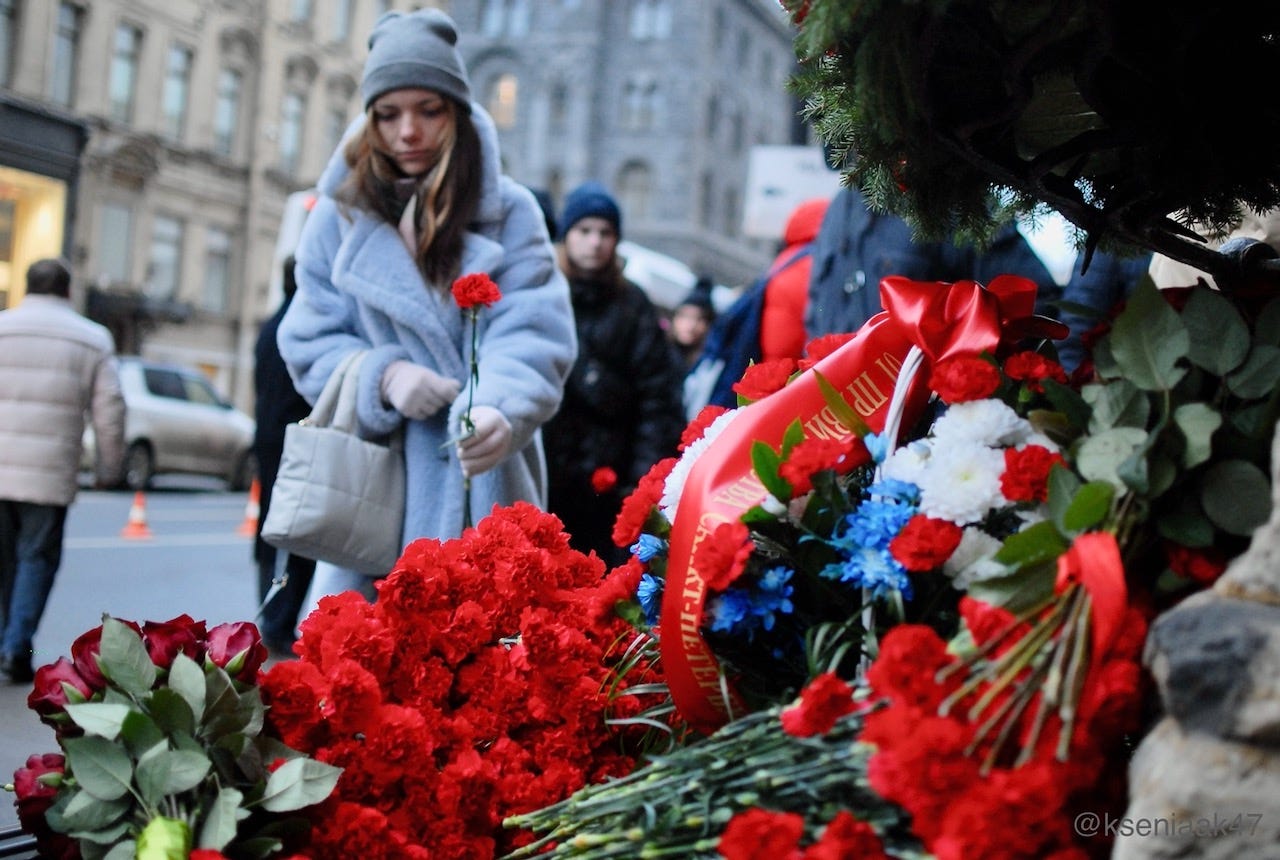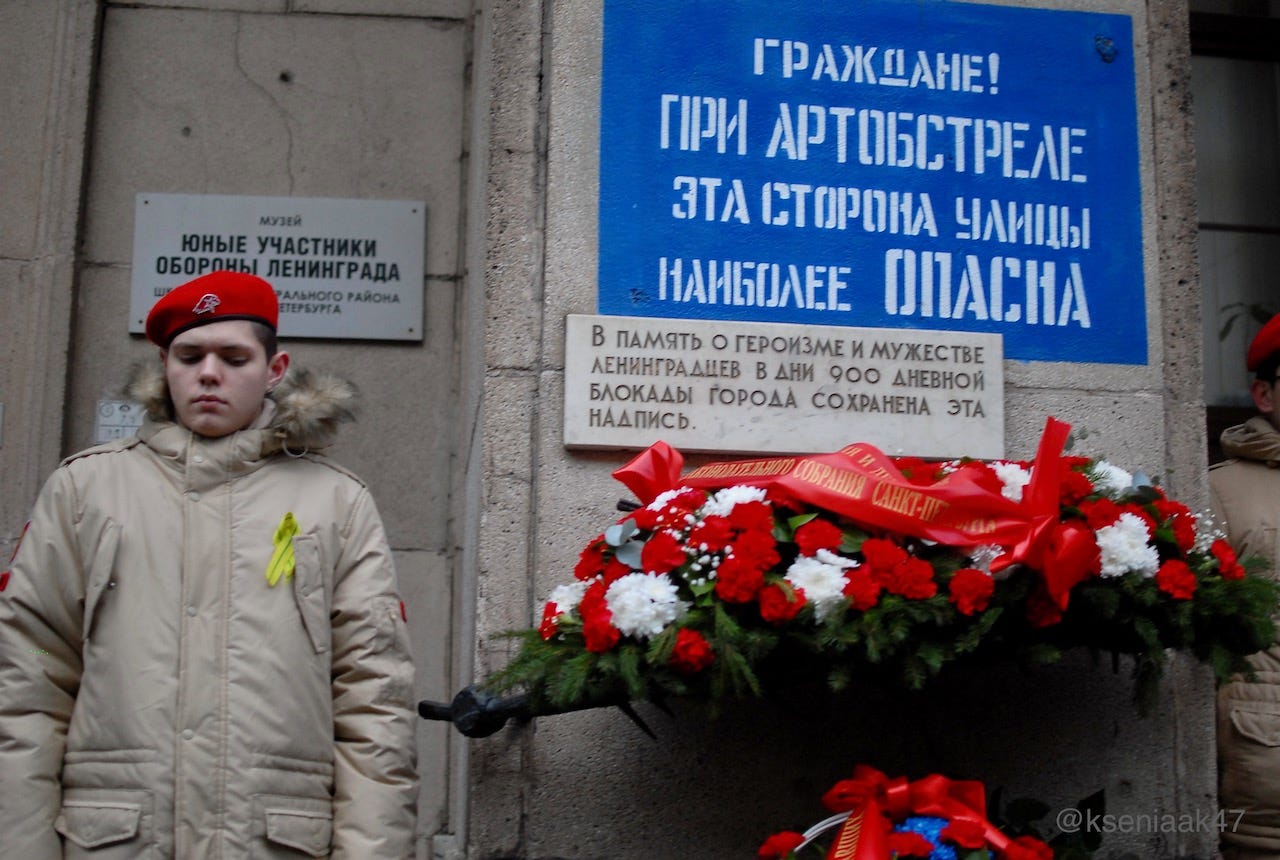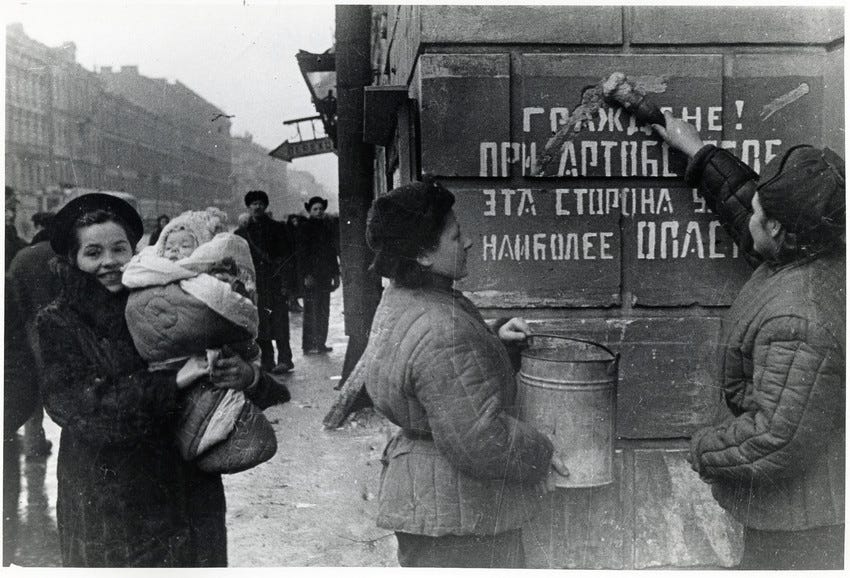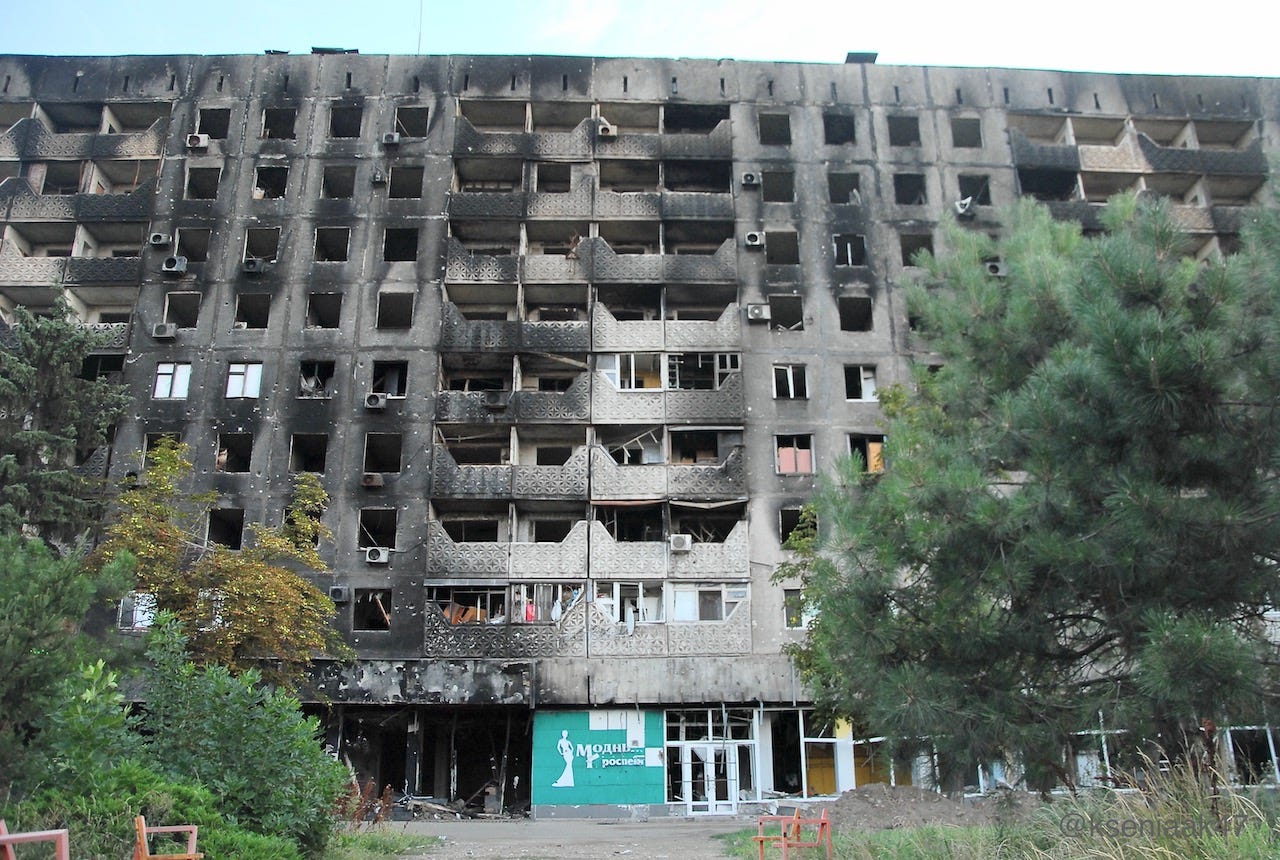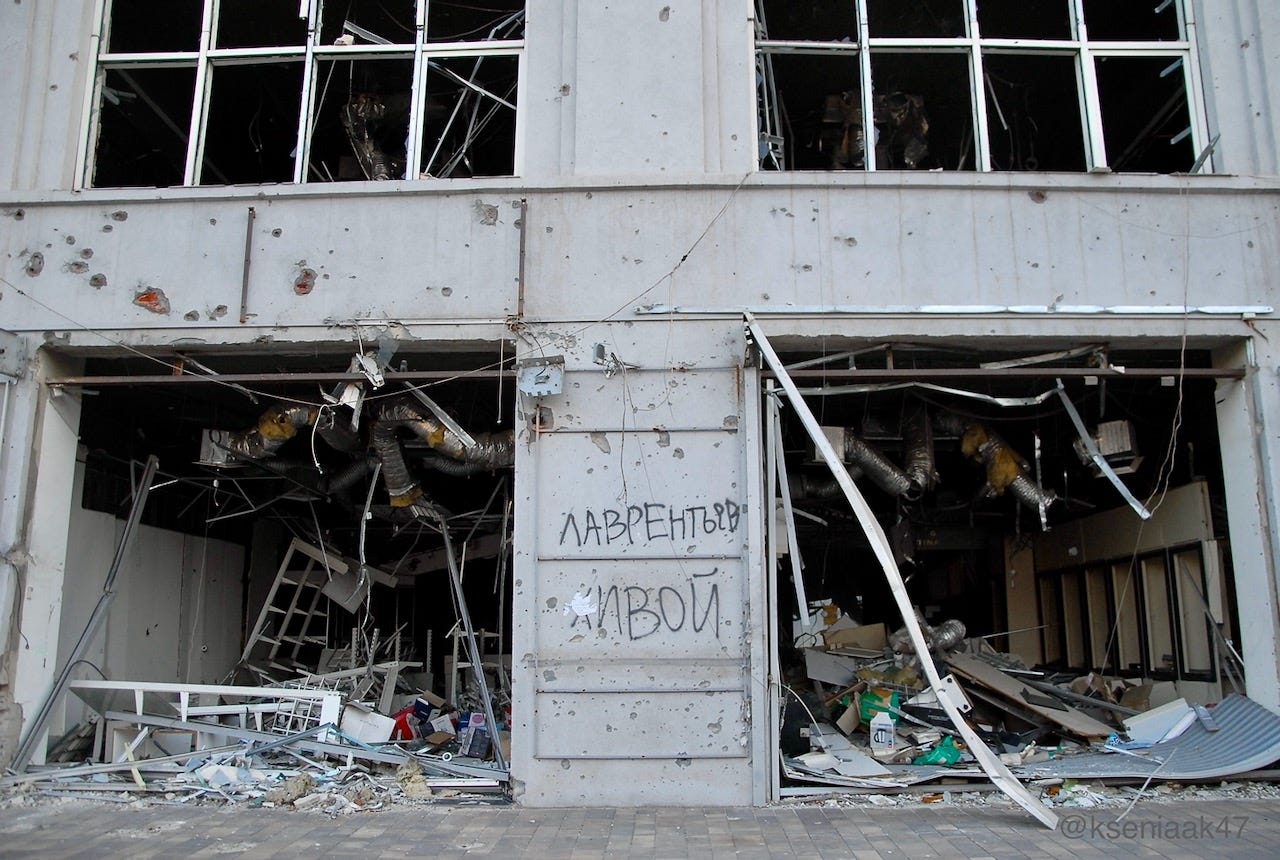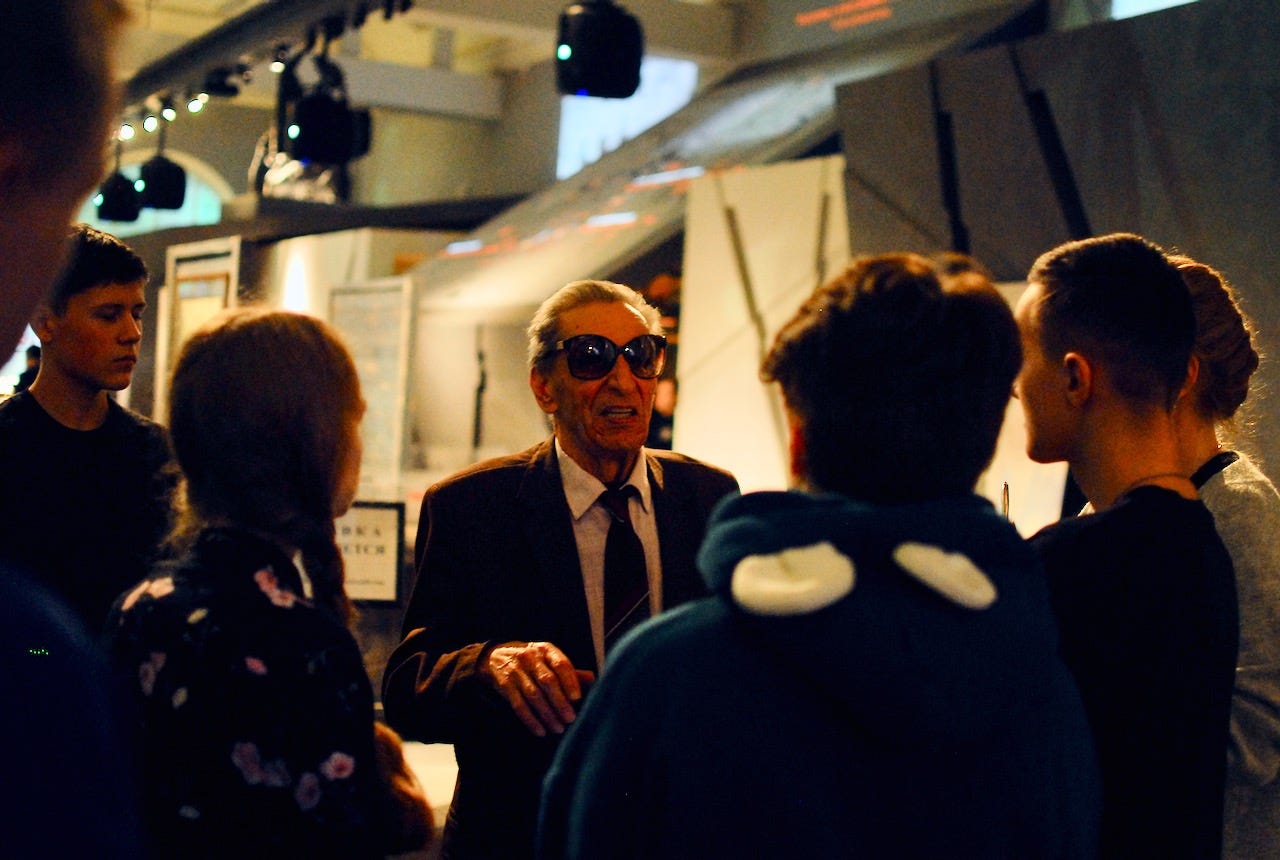War on memories
Why comparing the dark episodes of WWII which Russians and Ukrainians fought shoulder to shoulder against Nazis with today's war in Ukraine serves no purpose.
Stories of cannibalism and people making soup of gumboots during the 900-days Siege of Leningrad is something that every Russian kid, particularly living in today’s St. Petersburg, learns at a very young age. Preschoolers are making craft projects showing Nazi planes flying over the city, schoolchildren recite chilling poems of Anna Akhmatova and read Tanya Savicheva’s diary.
This year, on January 28, the day when Leningrad was liberated after being cut off from food, fuel and other vital supplies for over two years, children and students were summoned to lay flowers at the WWII monuments scattered across the city.
“I have never seen such a crowd here on this day,” says Valentina Kolesnikova, a tiny strong lady of 90 who was 8 when the siege started, as a group of kindergarten children marches past us to lay flowers at the memorial on city’s main avenue, Nevsky.
The blue inscription on the wall saying “This side of the street is the most dangerous during shelling” is just one of over 2000 of such inscription that were made in Leningrad during the siege. This one was restored after the war to preserve the memory — others were painted over right after the city was liberated. Historians say that writings appeared only in the second year of siege, as exhausted people got used to the shelling and accepted the idea of death that they stopped going down to the bomb shelters.
This year, traditional ceremonies commemorating the end of the Leningrad siege, had a different vibe. As Russia is in a state of war again, but now with a “brotherly nation”, with which it stood against Nazis 80 years back, the refined image of WWII, which Russia calls nothing but Great Patriotic war, is now being used to explain, defend or condemn what is happening in Ukraine today.
Wrong parallels
In the past 11 months after Russian president Vladimir Putin ordered troops into Ukraine on February 24, the Leningrad siege was remembered many times, particularly by Western and Ukrainian press. They compared the destruction brought to Ukrainian cities by the ongoing conflict with the experience of Leningrad (somehow missing to note the destruction that Donbass cities suffered since 2014, when Kyiv sent troops there to “fight with terrorists” — its own citizens who opposed Midan and Kyiv’s course on European integration).
City of Mariupol in Southern Ukraine, now under Russian control, saw some of the most bloody fighting in the beginning of the war and is most often compared with Leningrad. The city was encirсled by Russian troops in March 2022 and was taken under full control in May, after more than 2000 Azov battalion fighters, whom Ukraine hails as heroes and defenders of the city, layed arms before Russians.
Hardly anyone points out that unlike defenders of Leningrad, who built trenches around the city and repelled enemy’s attacks not to let the Nazis inside the city, defender of Mariupol chose a tactic of city fight where they would occupy school, hospitals and top floors of the residential towers to have an advantage over advancing Russians. Something that Amnesty International called “violation of international humanitarian law” and “endangering civilians” — only to get canceled later and having to apologize for telling the truth uncomfortable for Ukraine and distorting the Western media narrative of the conflict.
While the Mariupol battle is at the tips of our fingers today, the story of the Leningrad siege remains in literature not really known in the West, but also in memories of those who survived it in the very young age. People, like Valentina Kolesnikova, who come to Nevsky every January to lay flowers under the board that serves a silent reminder to the horrors of the city has witnessed.
Doomed city
After Nazi Germany invaded the Soviet Union in June 1941, the Wehrmacht’s Army Group North, under the command of General Wilhelm Ritter von Leeb advanced rapidly through the Baltic States of Latvia, Lithuania, and Estonia, occupying them by the beginning of July. Leningrad, USSR’s second largest city and an important industrial hub was the next target.
German troops approached the city from the west and south while their Finnish allies came from the north down the Karelian Isthmus. According to both Russian and Western historians, Hitler’s original plan was to capture and occupy Leningrad (there is a widespread rumor that the Fuhrer was planning to have a victory banquet in the famous Hotel Astoria).
However, considering the entire civilian population was mobilized to build anti tank fortifications along the city’s perimeter (in addition to around 200,000 troops of the Red Army), Nazis dropped the plan to storm Leningrad. They decided to destroy it by starvation and bombardment.
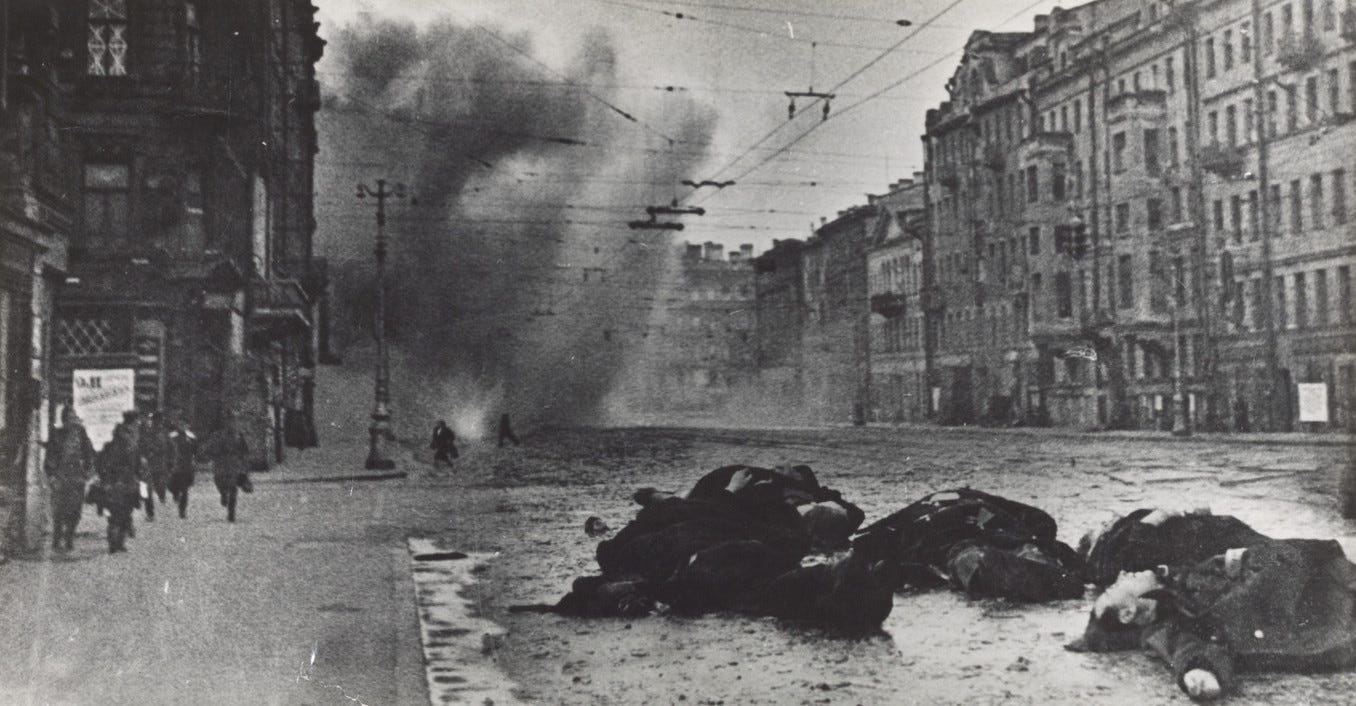
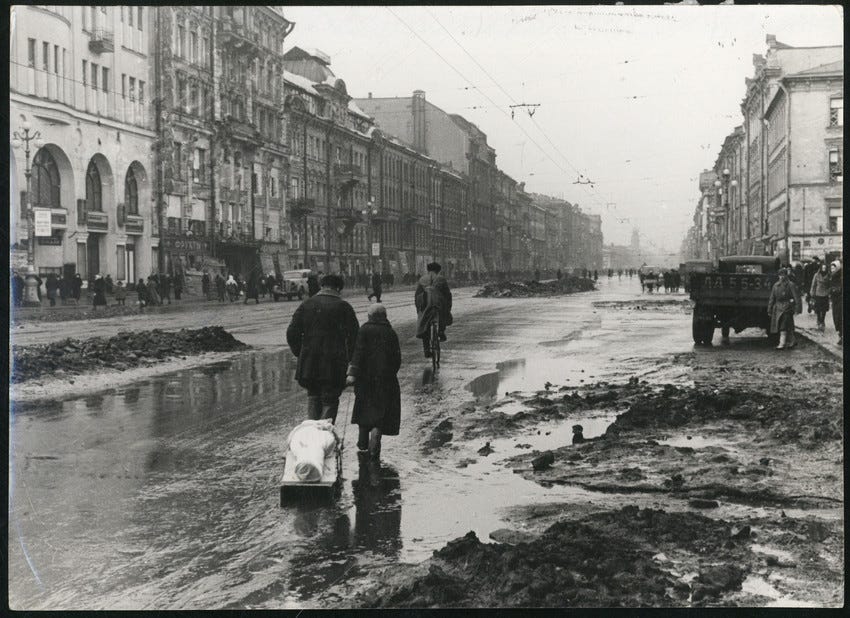
The city was completely encircled in August 1941, with the last railway line being cut near the Mga station and strategic town of Shlisselburg, 12km to the north on Lake Ladoga at the source of the Neva River, falling to the Germans. Around 150 thousand shells were fired and over 107 thousand incendiary and high-explosive bombs were dropped on Leningrad over 28 months of the siege, according to the official statistics although some historians believe the actual figures are less).
As we discuss what was the scariest during the siege days, bombing or hunger, Valentina Kolesnikova suddenly switches the topic:
“Now they are sending these tanks to Ukraine… Why, for what? But you know, if I was [feeling] a bit better, I would just go to the frontline and tell them “For what [you are doing it?]”
She then remembered a girl in her class, after the war, who was evacuated from Western Ukraine to Leningrad. “She was shy and quiet, and then she opened up. Those Banderovites [followers of far-right leader Stepan Bandera who collaborated with Hitler] have raped her mother in front of her eyes,” she added. “And now Estonia is dreaming to get more weapons to keep our city at gunpoint”.
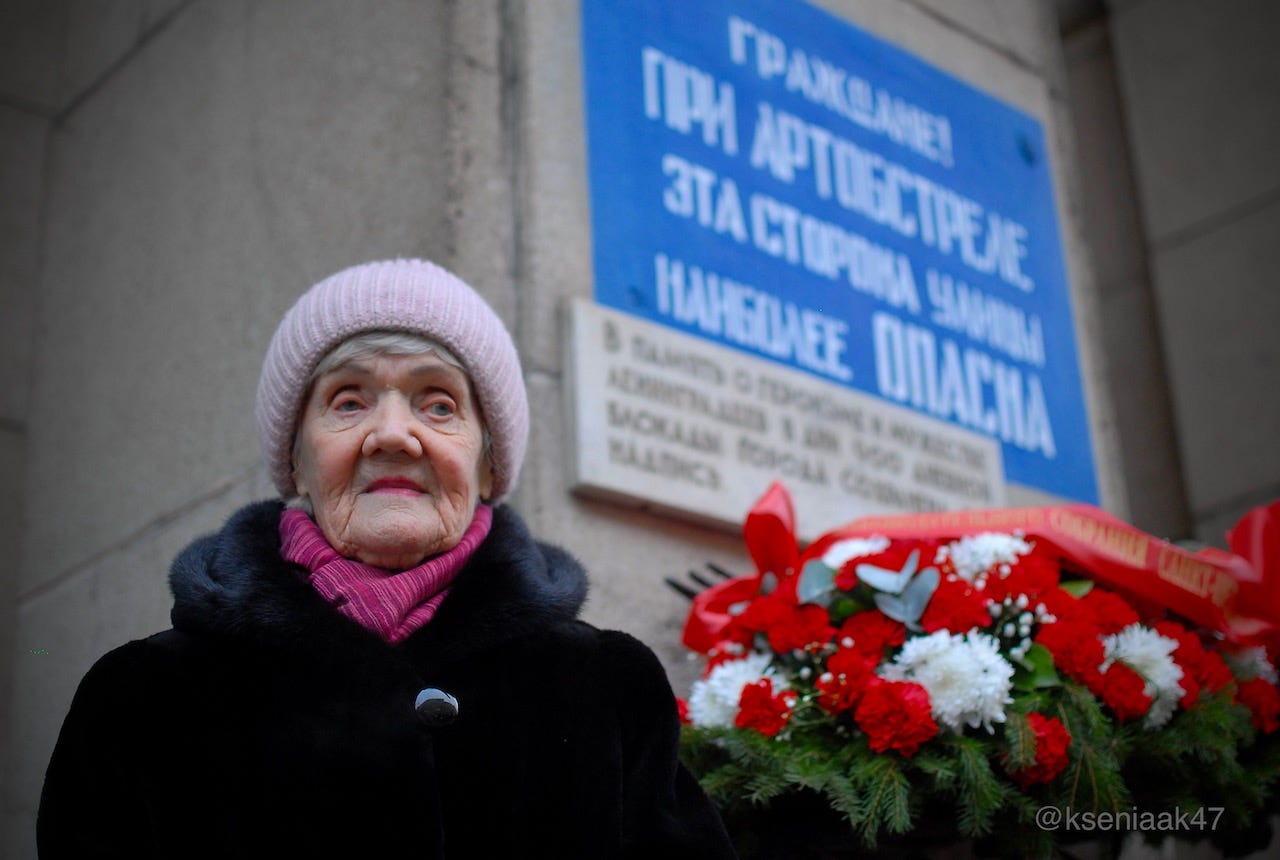
Other veterans I met during memorial ceremonies held across the city were not keen on answering the questions about Ukraine — they somewhat pretended as if they didn’t get the questions, but considering all of them were aged well above 90, it was difficult to distinguish pretending from not really understanding. And more difficult, or inhumane, would be to keep pushing the questions.
Memories alive
The veterans, however, are always keen on telling their stories of survival. Most of these stories revolve around food, or what could be used for food during those 900 says.
According to various estimations, one third of the city's 3-million population died during the siege — from 600 thousand to over 1.2 million. Only a small percentage (around 3%) of residents died due to shelling. The key cause of death was acute hunger.
The first winter in the blocked city was incredibly cold, with temperatures reaching -40C. Looking at the archive photos, one sees people wrapped in shawls and blankets. Interviews and literature on the siege is full of images of people collapsing in the streets and almost instantly freezing to death.
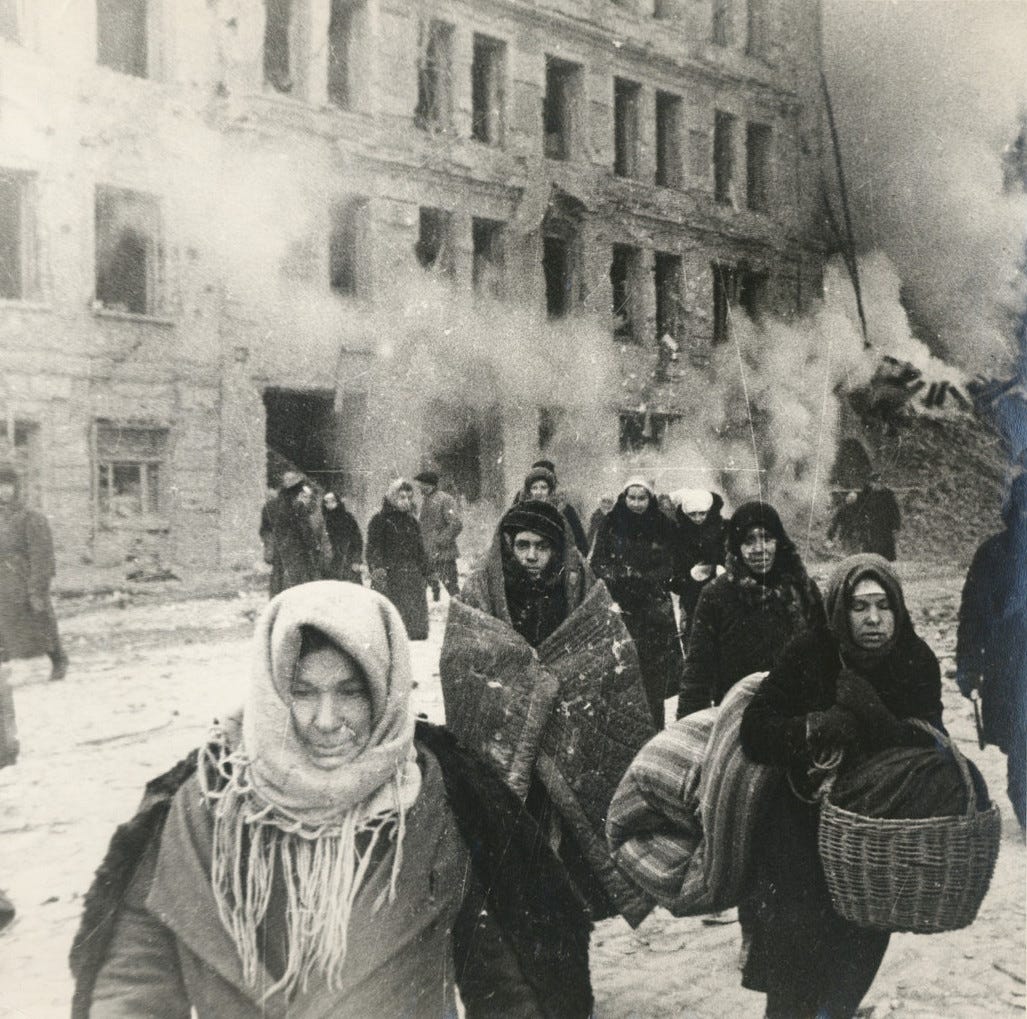
“Mother used to work at a military factory, she was out of home for 10-12 hours every day. Me and my brother, he was 5 then, used to sit at home and chip pieces of wood, first it was firewood, but very soon we had to use our furniture,” Valentina recalled. “It was very cold, we had a stove in the middle of the room but we were not allowed to light it without her [for the risk of carbon monoxide poisoning if the stove is not operated properly — KK]. She used to start the stove once she was back”.
“One evening mother was late from work. When she returned, she told us she fell down in the street and started sleeping off. It was snowing, and soon she turned into a small snowy hill. She woke up only when another pedestrian bumped into her, swearing “What are you lying here, old hag”. Mother was 34 then,” Valentina recalls.
She also recalled her mother not storing food at the beginning of the war. Even when Badaev warehouses that stored city's major supplies of food were were bombed by the Germans, and people rushed to collect remains of grains from the site, Valentina’s mother decided to grab something else.
“She was certain the war would end very soon, so she didn’t collect food” Valentina said. “But she managed to find a pack of new ladies’ panties. Later she would go to the market and exchange them for a handful of wheat or potatoes’ peelings. Those panties helped us survive”.
German Markov, another veteran and siege survivor, told me he was fighting with his mother for trying to give him an extra spoon of soup.
German was 10 years old when Leningrad was encircled. He used to go to school, until it was destroyed by a bomb. He used to do house errands while his mother was at work, getting bread (125 grams per day was a ration). In the warmer months he would catch tiny Stickleback fish in the Neva river. Normally, this fish is not considered to be edible, but it saved many lives during the siege. Sometimes, after airstrikes, the fish would jump out of the holes made by projectiles in the icy river — an effect like dynamite fishing — and this was a big luck for people.
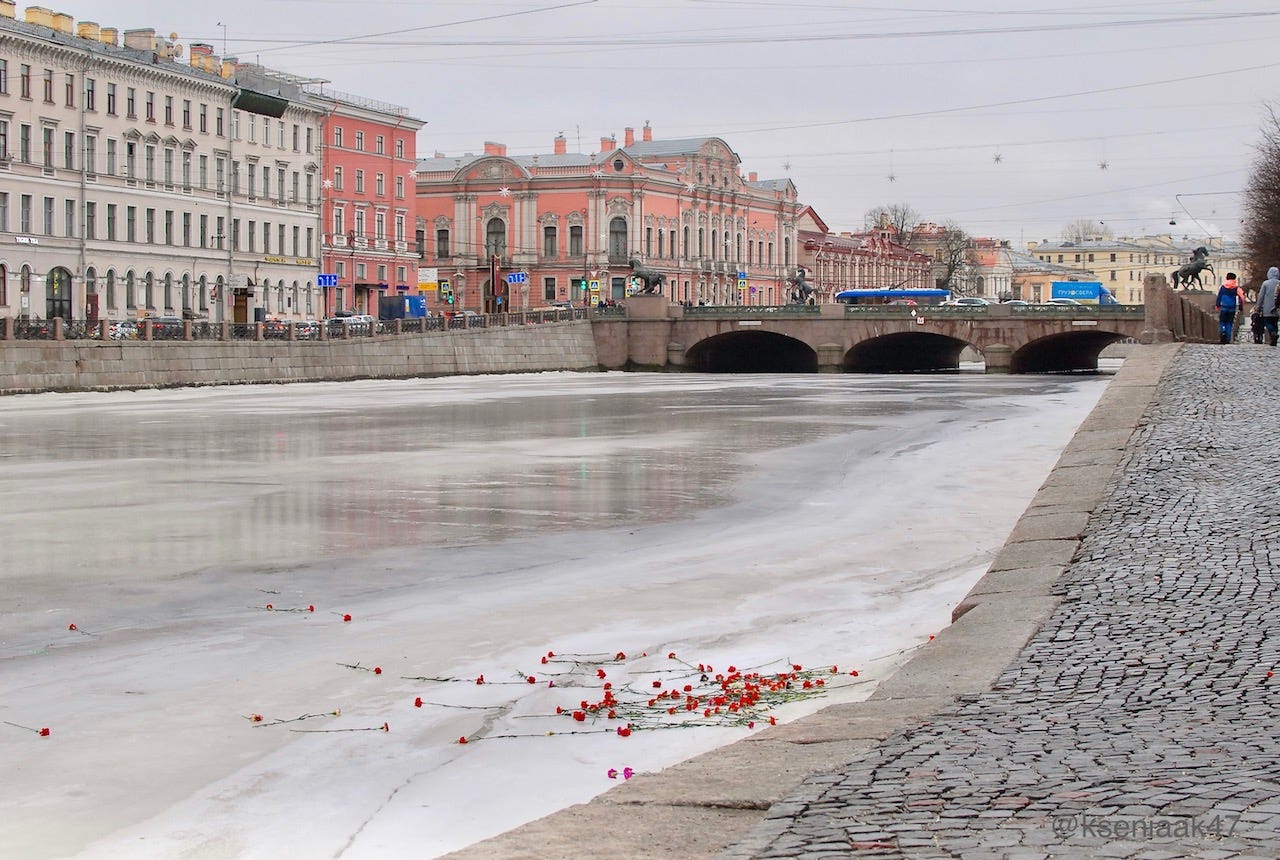
Markov’s mother was arrested before the war but released with a great help of a relative just before the city was encircled by The German Wehrmacht. Stalin’s Great Purge that preceded the war, and repressions that followed in the aftermath of the war, just added to the plight of those Leningrad residents who survived the Nazis.
Leningrad case — a series of criminal cases fabricated in 1949-1952 by Joseph Stalin in order to accuse a number of prominent Leningrad figures, including top officials in charge of the city’s defense during siege, scientist, doctors, literary workers, of reason and intention to create an anti-Soviet organization based in the city. Over 2000 people are believed to have been arrested, executed or sent to camps on such charges. All of the accused were rehabilitated, many of them posthumously, after Stalin’s death — during the Khrushchev Thaw.
Protecting civilians
Another aspect completely ignored by those who compare battles for Ukraine’s Mariupol or other cities, some of which are raging while we’re writing this, is evacuation of the civilians from besieged cities. As many Mariupol residents I and many other journalists spoke to reveal, they were not allowed to leave the city by the Ukrainian military: their cars would be turned away, back to the city, and many times shot at.
As Amnesty’s report cited above notes that the organisation “is not aware” that the Ukrainian military who occupied residential buildings, schools, hospitals asked or assisted civilians to evacuate nearby buildings which it calls “ a failure to take all feasible precautions to protect civilians”. Evacuation of civilians from Mariupol started only when Russian army took control of some parts of the city in late March (it was only towards Russia-controlled territories, however).
Evacuation from Leningrad is a separate chapter in the sorrowful history of the WWII. Efforts to evacuate the most vulnerable started in the first days of the war, in June 1941. Children of different ages were the first to be evacuated. In total, according to the City Evacuation Commission, 488,703 city residents and 147,500 people from the Baltic states and the region left the city before it was encircled.
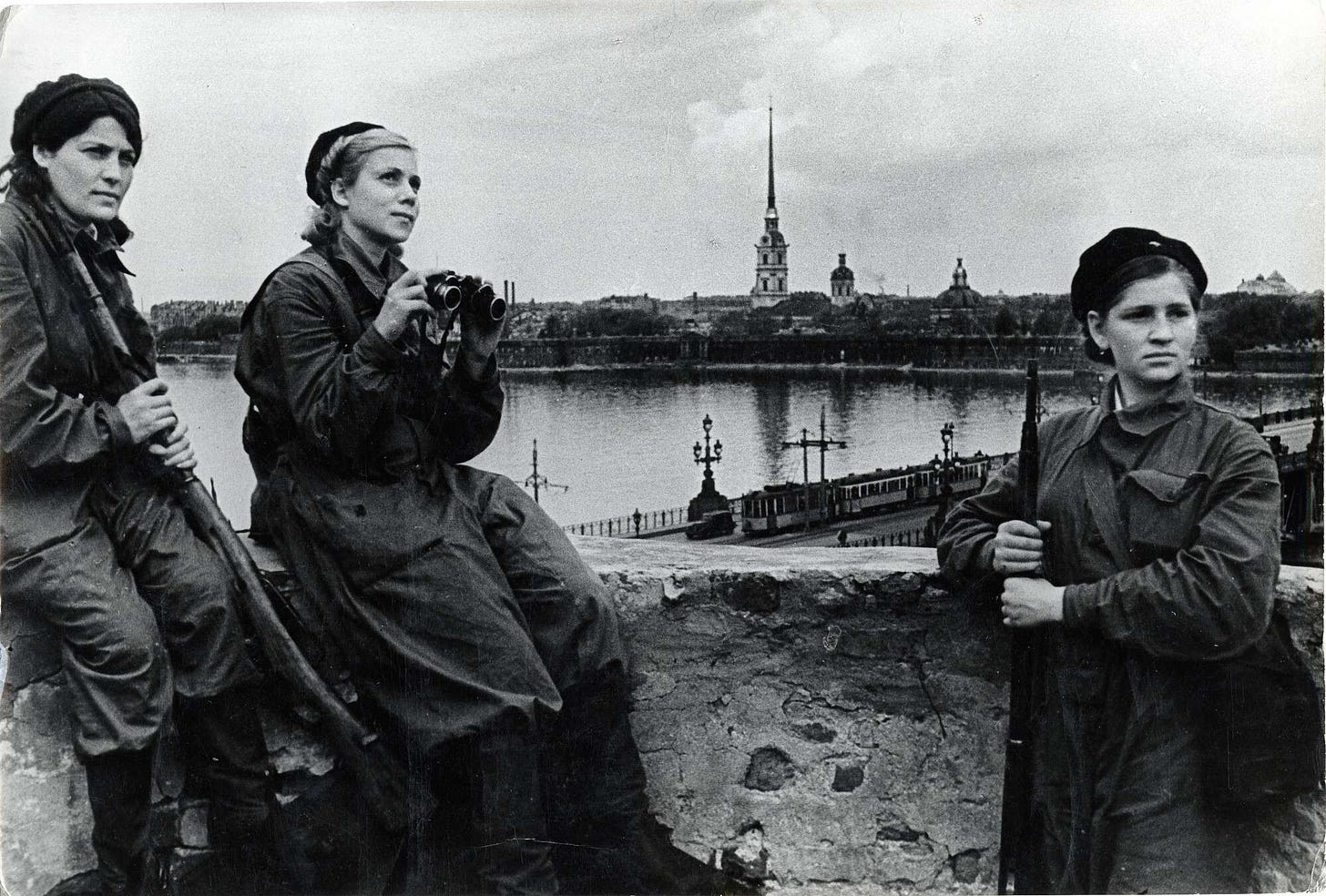
Few months after the city was cut off from the mainland in September 1941, the famous Road of Life started functioning — extremely dangerous but only possible route set on the ice of Lake Ladoga. Throughout two and half years of the siege, it allowed the evacuation of around 1.2 million people from the city. Thousands of people died while being evacuated first by land routes, then via Road of LIfe, as evacuation trains, buses and barges were constantly shelled by Nazis.
In one such instance, hundreds of children (some sources say over 2,000) were killed by Nazis in Lichkovo village, in Novgorod region, on July 18 1941 — the Luftwaffe attacked a 12-wagon train that was carrying children away from Leningrad.
The Soviet government has never made the information public — the official documents noted just two wagons were shelled and 41 people dead, including 18 children. However, accounts of witnesses — residents of the village who later buried the remains and constructed a memorial, as well as survivors, including Eugenia Frolova, who later returned to Leningrad and became a journalist — revealed the scale of the tragedy.
“The plane was circling overhead and slowly descending, and a kindergarten nurse from the next wagon is running past us, surrounded by toddlers. We could hear her wheezing: "Hurry up! hurry up!.. there, in the garden ..." – she was hiding the kids in the cabbage field. The last thing we saw before we hid in a shelter was that airplane descending almost to the ground, and a machine gun striking these cabbages, the little babies,” Frolova wrote in her essay published only in 2007.
This year, statements of several Leningrad siege survivors were recorded and shown to school children as a part of Kremlin-designed “Important conversations” initiative that kicked-off in all the schools across Russia since September last year.
“Why is it important to know [about Leningrad siege]? History lives in our memory. The main thing is to remember what happened in order not to repeat the bad, terrible, tragic events that happened. [...] Bearing in mind today’s situation in Ukraine, where there was an attempt to revive Nazism, in order to understand what is happening, you need to think about the days of the WWII. Our struggle is not with Ukraine, but with Nazism, which cannot be allowed to be revived”, Dmitry Murin, a resident of besieged Leningrad, said in the video.
The veterans definitely use the Russian propaganda line on Nazis in Ukraine, which is often used for explaining, or justifying, the “special operation”. Nazi’s existance in Ukraine is undeniable, and the fact that some of the best trained and equipped battalions on the forefront of Ukraine’s military openly follow Nazi ideology was widely reported by the international media before the outbreak of the hostilities in 2022. This, however, is hardly the reason for Russia to get into such a complicated war that is destroying its people, economy and splits the society.
But what else, other than the re-emerged threat of Nazis, can resonate with people who survived the terror inflicted by them? Commenting on veterans addressing the schoolchildren many said it is important to amplify their voices and teach the younger generation about the WWII. Others condemned using very old people for the purpose of the official propaganda. Some even raged against veterans for contradicting their own statements: if war is horrible and should not repeat, why to defend Russia’s move against Ukraine?
Something that is easily missed out by post-truth enthusiasts is that 80 years back residents of Leningrad, children and adults, had no doubts who the enemy was and what they fought for, both in the trenches and at the home front. This can’t be said about most of Russians today.



